Unleash your creativity with the top generative AI tools of 2024, from ChatGPT to powerful image creators, designed to transform how you work and innovate . Generative AI is one of the most stimulating branches of AI as it is a technology capable of generating almost anything on its own from simple scratch.
Generative AI aims to train AI to create unique and innovative content. In contrast to conventional AI which works according to a set of instructions, generative AI learns from the data and produces content on its own. This technology uses intricate mathematical computations and neural network models to analyze patterns and generate outputs that are as creative as human beings.
Generative AI Tools and Platforms
Best generative AI tools and platforms that are defining the current and future state of technology, each offering their benefits and innovations are here below…
ChatGPT
ChatGPT is an autoregressive language model and is highly regarded for its realistic output. It is most effective in the context of conversation, question-answering and creative writing tasks. This tool is commonly used in customer support chatbots, content generation and ideation. Its strength is natural language processing, but its weaknesses are that it can misinterpret information and does not understand complex contextual relations.
Scribe
Scribe has the potential to revolutionize content creation through its ability to summarize articles, write reports and help with academic writing. It is particularly helpful to journalists, students and professionals as it improves research and writing efficiency. However, one can assume that more complex tasks related to creative writing may still need the human touch to be precise.
AlphaCode
This is a revolutionary coding tool that uses generative AI to assist software developers. It is particularly useful in writing code, fixing errors and providing the best approach to the code to be written. AlphaCode also helps improve the speed and coding skills, but it may not be the best choice in complex scenarios as it tends to use standard patterns in coding.
GitHub Copilot
GitHub Copilot modernizes coding with its features and compatibility with most code editors in use today. It provides code examples, descriptions, and suggestions based on the context, which optimizes the efficiency of developers and their education. Some of the generated code can require additional work to look polished and it relies on external APIs for suggestions.
Bard
Bard is revolutionary chatbot and content-writing tool and is built by Google; based on LaMDA, which is a transformer model. It is still in the experimental stage.
Cohere
Cohere enables developers to build engaging conversation systems that can create more personalized content. It is especially useful for marketing purposes in creating a custom email to be sent out to a large number of people. However, the fine-tuning process has to be refined in order to keep the context of the interactions coherent.
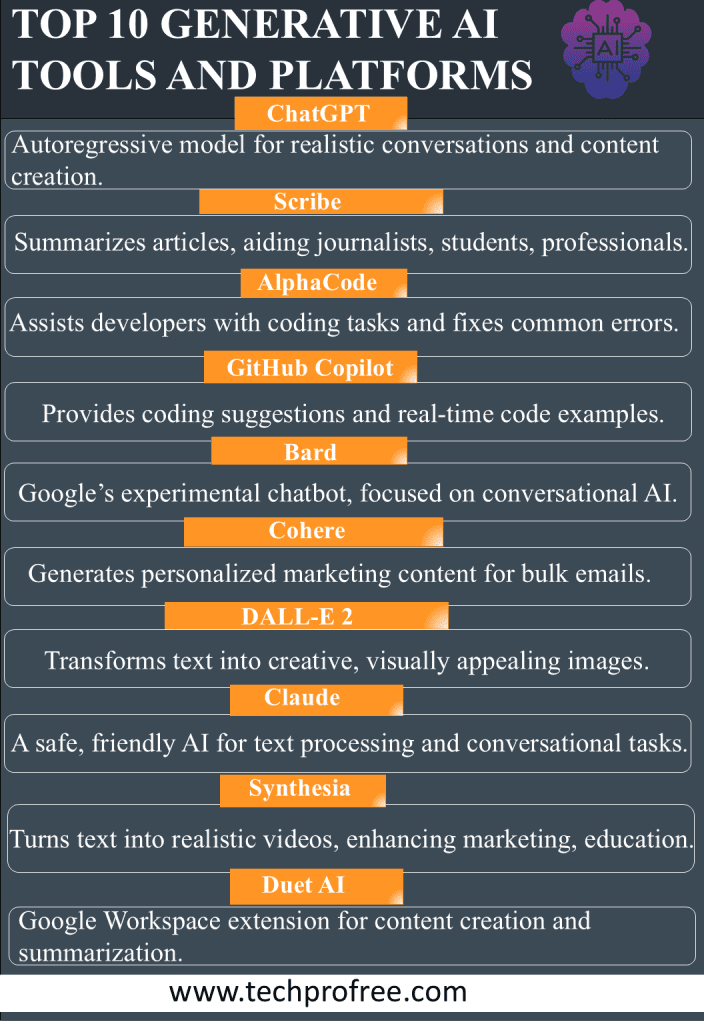
Dall-E 2
Dall-E 2 is the state-of-the-art generative model and focuses mainly on image generation.
It allows artists and designers to come up with new ideas as it can translate text into appealing graphics.
Although it drives creativity, there could be cases where inaccuracies and limitations are present within the trained concepts.
Claude
A new AI assistant created by Anthropic where the AI is friendly, non-exploitative and safe to use. It effectively and efficiently processes a large volume of text data, converses naturally, supports multiple languages, automates intricate processes, and learns from user interactions for the next iteration.
Synthesia
Synthesia brings a new era of content production, as it is capable of producing realistic videos from plain text. As a result of using complex deep learning algorithms, it smoothly combines text with realistic images and turns ideas into bright and memorable visions. This technology is highly useful in marketing, entertainment and education, as it changes the approaches to communication and visualization.
Duet AI
Duet AI for Google Workspace works as a Google extension and adds enhanced features for content creation, summarization, and rewriting into Gmail, Google Docs and Google Meet. It uses a strong large language model like AI chatbots such as ChatGPT but takes it a step further by integrating these functionalities into normal Google applications, thus avoiding the transfer of content between applications. Currently in beta, Duet AI for Google Workspace provides several advanced features:
Comparison Of Top Generative AI Tools
Given below Comparison Of Top Generative AI Tools Based on Features , Usability , Platforms
| AI Tool | Feature | Usability | Platform |
| ChatGPT | Natural Language Processing for conversations | Best for conversational tasks | Web, API |
| Scribe | Summarizing articles, academic writing | Great for journalism and research | Web, API |
| AlphaCode | Helps write and fix code | Improves coding speed and accuracy | Web |
| GitHub Copilot | Provides code examples and suggestions | Optimizes developer efficiency | VS Code, JetBrains, other code editors |
| Bard | Experimental chatbot and content writing tool | In experimental phase | Web |
| Cohere | Generates personalized marketing content | Effective in marketing email generation | API |
| Dall-E 2 | Image generation from text | Inspires artists and designers | Web |
| Claude | Friendly AI assistant for natural conversation | Processes large text data | Web, API |
| Synthesia | Realistic video generation from text | Transforms text into visual content | Web, API |
| Duet AI | Enhanced features in Google Workspace for content creation | Integrates with Gmail, Docs, and Meet for content creation | Google Workspace |
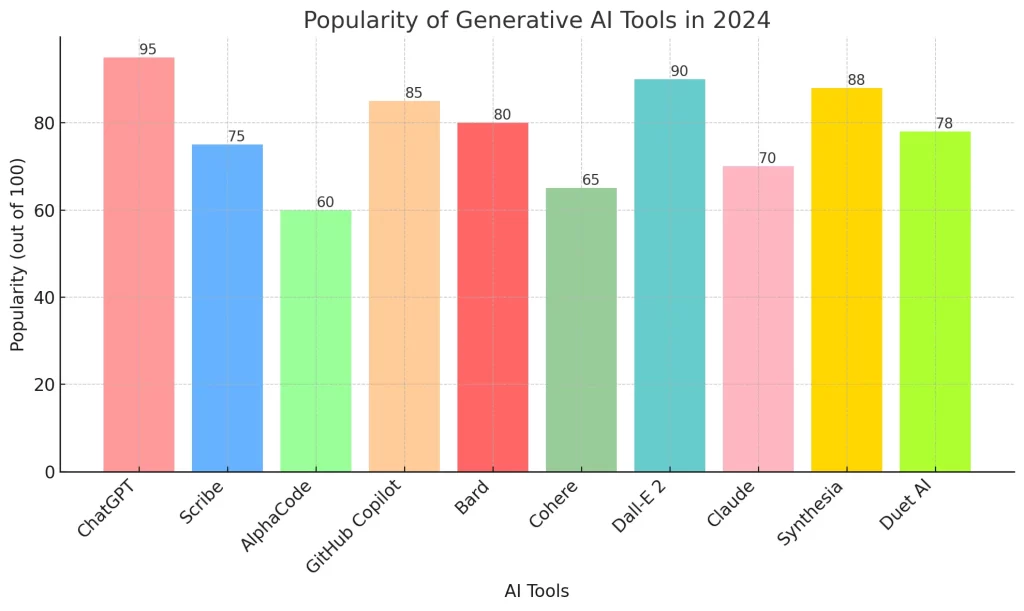
Key Features of Generative AI Tools
- Employs generative AI to make texts in the most efficient way possible.
- Provides cloud users with code help through the use of AI.
- It is easy to use and allows the generation of images from the provided inputs.
- It is used in the development of intelligent business applications.
- Enables users to automate processes within Google Workspace through voice commands.
- These tools are the epitome of generative AI, with each of them having its own role in content generation, coding, and art, and are constantly improving to adapt to the needs of the different sectors.
Conclusion
Generative AI is already transforming industries with its capacity to generate content, art, code and more on its own. Research has indicated that content creation can be done 40% more efficiently and creative output can be increased by 75% with generative AI. Starting with the ChatGPT to the image generator Dall-E 2, these AI tools are unique in their operations. Coding assistants and collaboration features are the two major features that can be used by developers to improve their work. Content creators must integrate AI as it can help in research and content generation. Tools like Synthesia can create realistic videos from a text input, whereas Duet AI works with Google Workspace and allows content creation within applications.

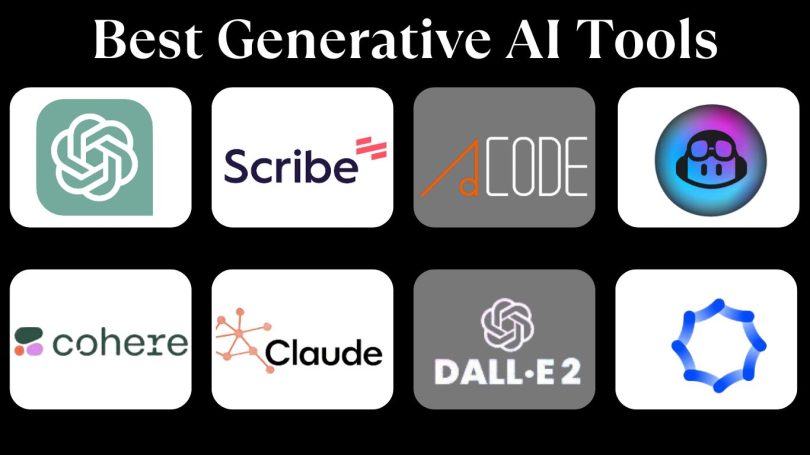
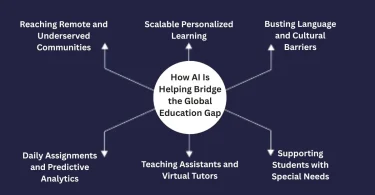
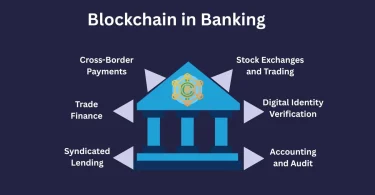
Leave a Comment